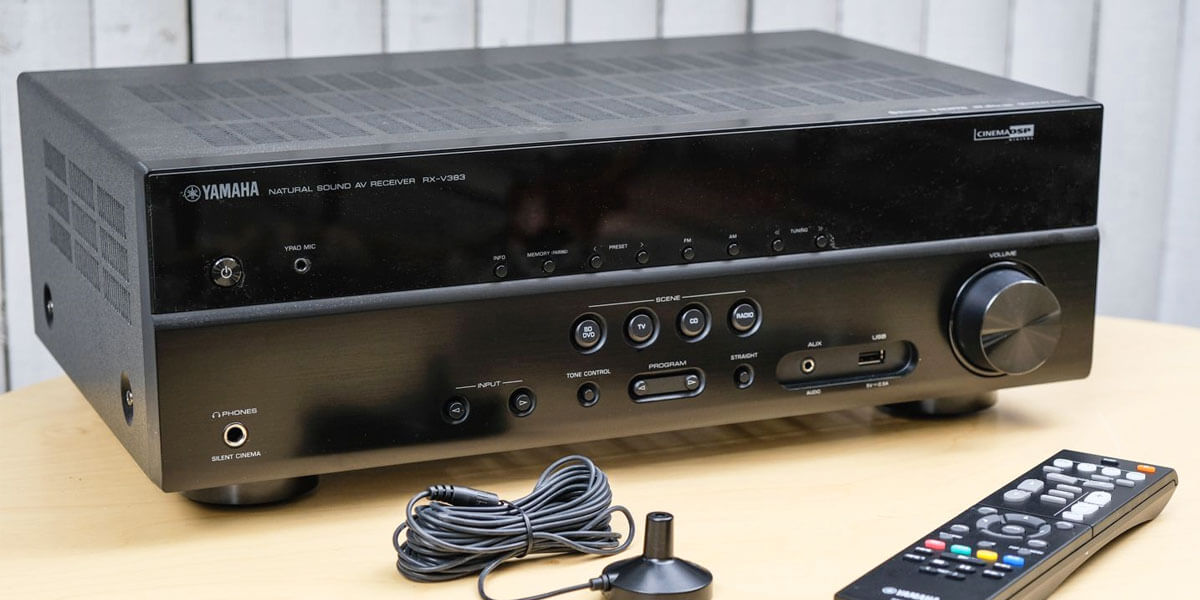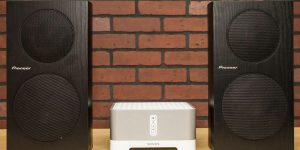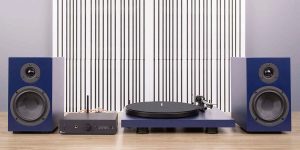When you’re looking for a new AV receiver, you will most likely rely your choice on the specifications indicated on the device box, particularly its power ratings. And it’s quite wise as the objective characteristics of an AVR allow us to understand its potential.
However, it’s not that straightforward, and by orienting with the watts per channel spec only and having no clue of how to treat this and other specs correctly, there’s a high chance that you will choose the model which is nowhere better or even worse than your previous one.
That’s why I decided to prepare this article, where you will find working guidelines on how to treat the characteristics mentioned on the device boxes. So, read it, make notes if needed, and believe me, you will find an AV receiver that provides really brilliant sound!
The significance of power output for the end sound quality
When choosing an AV (audio/video) receiver, the receiver power output specification is a rather important factor to consider. It refers to the amount of power (measured in watts) that the device can deliver to each channel of your speaker system.
However, it’s essential to note that more power doesn’t always mean better sound. But let’s consider what watts mean in terms of sound in more detail.
Definition and significance of watts
A watt is a unit of power in the International System of Units (SI) named after the Scottish engineer James Watt, who contributed to the invention of the steam engine.
In terms of electricity, one watt is defined as the power produced by a current of one ampere across an electric potential difference of one volt, i.e., 1 watt = 1 ampere × 1 volt.
From the table below, you can get to know how the receiver wattage influences your audio system:
| Aspect | How wattage influences it |
|---|---|
| Power output | It indicates how much power the receiver can deliver to each channel of your speaker system. |
| Sound volume | The higher the wattage, the louder the potential sound output. |
| Sound quality | Having a higher power output can reduce sound distortion and maintain the fidelity of the sound at louder volumes. |
| Speaker compatibility | The wattage of an AV receiver must be compatible with the speakers you are using. |
RMS vs peak power
RMS and peak power are two different ways of measuring power, and they are particularly relevant when dealing with audio equipment. Still, these measures are not equally important when choosing new audio equipment, and here’s why:
- RMS power (root mean square power): This is a measure of continuous power handling or output and is a more accurate representation of an audio device’s real-world performance. RMS is derived by taking the square root of the mean (average) of the squares of the maximum system output. In other words, it measures how much power the system can handle over a prolonged period. I think this is the most important spec to look at because it provides a clear standard for comparison between different audio components.
- Peak power: Also known as “max power”, peak power is a measure of the maximum power output a device can produce instantaneously before distortion becomes apparent or the device becomes damaged. It is typically much higher than the RMS power rating but less practically relevant for most audio applications. While it might seem impressive, a high peak power rating doesn’t necessarily mean that the device will sound good when played at high volumes for extended periods.
As you most likely have already guessed, when choosing an AV receiver, the RMS power rating will generally be more important than the peak power rating.
How wattage affects audio quality and performance
Wattage does have a direct impact on audio quality and performance. Therefore, I tried to provide you with the most informative overview of it in the table:
| Audio quality aspect | The impact of wattage on it |
|---|---|
| Volume | A higher wattage means the system can produce more sound pressure (volume), assuming the speakers can handle it. |
| Sound quality | Higher wattage helps maintain the signal quality and reduce distortion, even when the speakers produce loud sounds. |
| Headroom | An amplifier with more power (higher wattage) has more headroom, allowing it to handle sudden peaks without distortion. |
| Dynamics | Higher wattage allows the system to reproduce the dynamics in the music more accurately. |
However, the final sound quality also depends on such factors as the quality of the amplifier’s components and design, the source audio quality, the speakers’ quality, etc.
Channels: distribution of audio signals
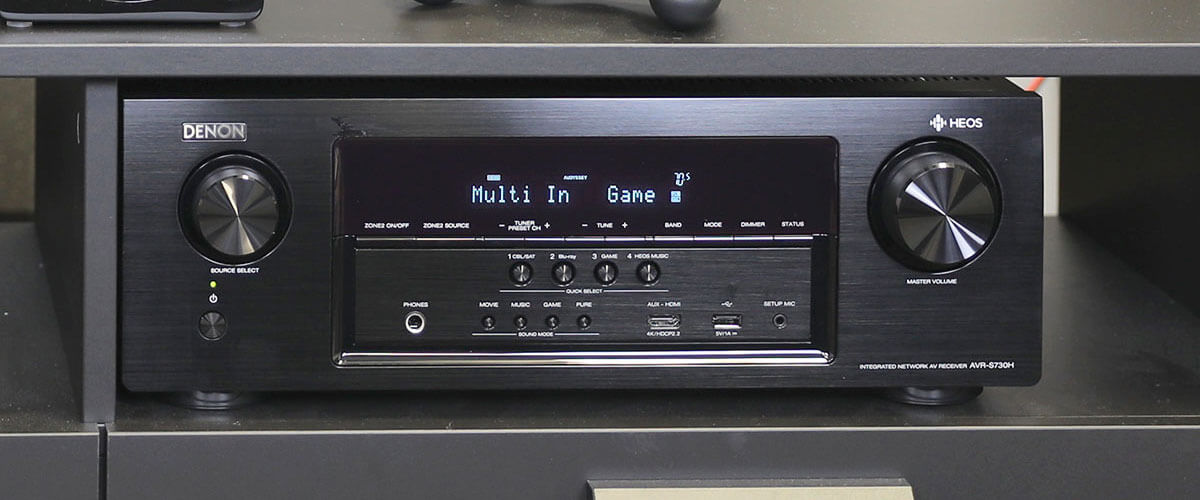
Channels are individual streams of audio directed to different sections of the speaker system. These streams are actually sculpting your soundscape. So the question “How many watts per channel do I need?” is relevant.
Here’s a brief overview of how audio signals are distributed in common multi-channel setups:
- Stereo (2.0): In this multi-channel system, the sound is divided into two channels, left and right. Each channel corresponds to one speaker. This setup can create a sense of width and space but lacks depth and immersion.
- Surround sound (5.1): In a 5.1 system, there are six channels: front left, front right, center, surround left, surround right, and a low-frequency effects (subwoofer) channel. As a result of dividing the sound into these directions, it becomes more immersive and seems to come from different directions.
- Surround sound (7.1): A 7.1 system adds two additional channels (rear left and rear right) to the 5.1 setup, providing an even more enveloping sound field.
- Atmos (5.1.2, 7.1.2, etc.): In this case, overhead channels are added, which creates a sense of height and further enhances the immersive quality of the sound.
Impedance: electrical resistance and load
Impedance is one of the most critical characteristics of an AV receiver that can also influence its sound quality. Below, I reflect on it further, trying to provide you with a fuller picture of its role.
Basics of impedance and its role in AV systems
Impedance represents the opposition to the flow of alternating current (AC) in a circuit, including both resistance and reactance. It’s measured in ohms (Ω), similar to resistance, but unlike resistance, impedance takes into account the fact that the opposition to current can vary with frequency in AC circuits.
Here’s how impedance plays a role in AV receivers:
- Matching impedance: The impedance of speakers (the load) should perfectly match the AV receiver’s or amplifier’s output impedance. Most home audio receivers are designed to handle speakers with 4 to 16 ohms impedance.
- The efficiency of power transfer: If the impedance of your speakers is too high compared to your AV receiver, the receiver may not be able to deliver enough power to drive the speakers properly. Conversely, if the speakers’ impedance is too low, the receiver could deliver too much power, potentially overheating or damaging the speakers or itself.
- Sound quality: If the amplifier isn’t designed to handle the speakers’ impedance, it could introduce distortion or other sound quality issues.
- Multiple speakers: Speakers connected in series will increase the total impedance, while speakers connected in parallel will decrease it.
Matching speaker and receiver impedance
Even if your receiver or amplifier is №1 in all amplifier ratings, it won’t provide a worthy sound experience unless its impedance matches one of your speakers. So matching receiver and speaker impedance is really essential. Here’s why:
- Maximizing efficiency: When the output impedance of the receiver matches the impedance of the speakers, power transfer is maximized. This ensures the receiver can drive the speakers properly, leading to the best possible sound quality and volume.
- Avoiding damage: If the speaker impedance is too low compared to the receiver’s output impedance, the receiver may have to deliver more current than it’s designed to handle. This could cause it to overheat and potentially damage the receiver and speakers. On the other hand, if the speaker impedance is too high, the receiver may not be able to deliver enough power to the speakers, leading to reduced volume and potentially compromised sound quality.
In general, for a safe and efficient system, you should always ensure that your receiver or amplifier is designed to handle the impedance of your speakers.
The most common misconceptions about AV receiver power ratings
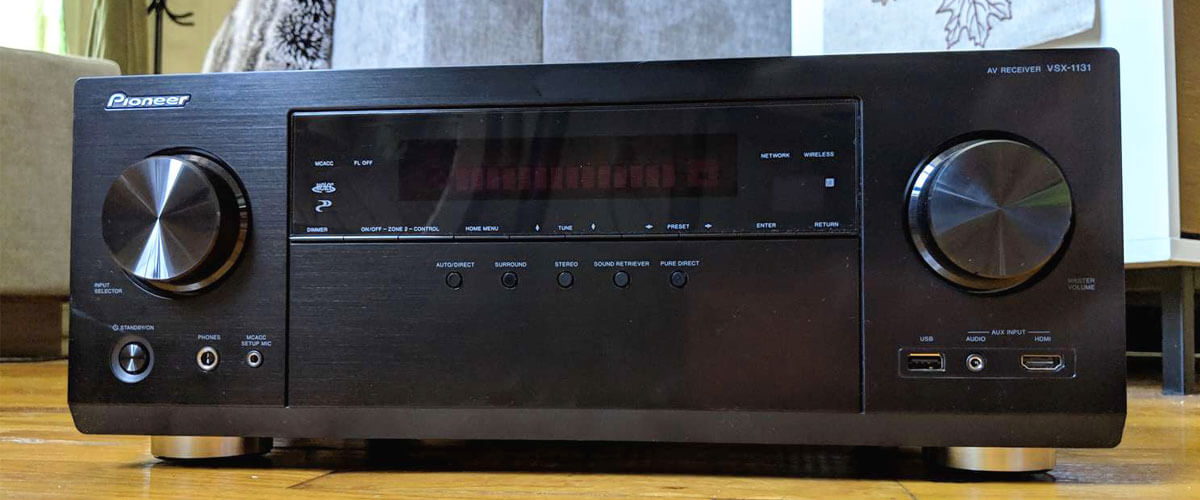
High wattage equals better sound quality
It’s one of the most popular misconceptions. To achieve the best sound quality for your audio system, you don’t necessarily need to buy the AV receiver with the biggest wattage. However, high power cannot guarantee your audio system’s sound quality. Instead, pay attention to such specs as RMS power and matching Impedance of your receiver and speakers.
Power ratings and real-world performance
Real-world performance does not only depend on the power ratings of your receiver. Other factors also influence it: the room size, speakers, wires, etc.
Importance of other specifications
Aside from wattage, it’s necessary to pay attention to the receiver’s RMS, impedance, speakers compatibility, and the channels involved.

